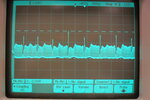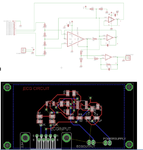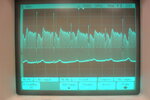CaptainSpock
Junior Member level 3
Hi all,
I'm doing my final year project which requires me to adopt a ECG circuit from TI for a part in my project.
Using TI instrumentation Amp INA321, TEXAS INSTRUMENTS|INA321EA/250G4|IC, AMP INSTRUMENTATION, MSOP8 | element14 Singapore
ECG Circuit

I have difficulties understanding the circuit and how it function. can anyone help??
lots of thanks in advance
Signing off,
CaptainSpock
I'm doing my final year project which requires me to adopt a ECG circuit from TI for a part in my project.
Using TI instrumentation Amp INA321, TEXAS INSTRUMENTS|INA321EA/250G4|IC, AMP INSTRUMENTATION, MSOP8 | element14 Singapore
ECG Circuit

I have difficulties understanding the circuit and how it function. can anyone help??
lots of thanks in advance
Signing off,
CaptainSpock



